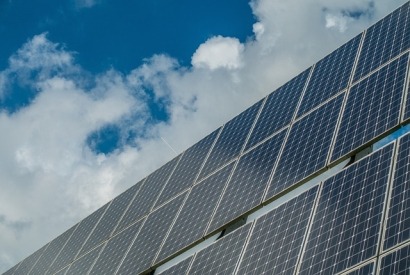
In its latest monthly "Energy Infrastructure Update" report (with data through February 29, 2024), FERC says 29 "units" of solar provided 1,043 MW of new domestic generating capacity or 83.64% of the total. Most of the balance (16.04%) was provided by the 200-MW Horizon Hill Wind Project in Logan County, Oklahoma. Natural gas generating capacity increased by only 4-MW.
For the first two months of this year, solar accounted for 78.50% of new generating capacity brought on-line while wind contributed another 20.34%.
Solar has now been the largest source of new generating capacity for six months straight: September 2023 – February 2024. For five of those six months, wind took second place with natural gas winning the #2 slot just once.
The latest capacity additions have brought solar's share of total available installed utility-scale (i.e., >1-MW) generating capacity up to 8.21%, surpassing that of hydropower (7.85%). Wind is currently at 11.77%. With the inclusion of biomass (1.15%) and geothermal (0.32%), renewables now claim a 29.30% share of total U.S. utility-scale generating capacity.
For perspective, just a year ago, solar's share was 6.63% while wind and hydropower were 11.48% and 8.00% respectively. The mix of all renewables totaled 27.63%.
Installed utility-scale solar has now moved into fourth place – behind natural gas (43.76%), coal (15.99%) and wind - for its share of generating capacity after having recently surpassed that of nuclear power (8.00%).
FERC reports that "high probability" additions of solar between March 2024 and February 2027 total 87,749-MW – an amount more than triple the forecast net "high probability" additions for wind (23,874-MW), the second fastest growing resource.
FERC also foresees growth for hydropower (575-MW), geothermal (400-MW), and biomass (25-MW). The new 1,100-MW Vogtle-4 reactor in Georgia will increase nuclear capacity modestly while coal, natural gas, and oil are projected to contract by 21,487-MW, 3,131-MW, and 2,059-MW respectively.
If just FERC's current "high probability" additions materialize, by March 1, 2027, solar will account for almost one-seventh (14.06%) of the nation's installed utility-scale generating capacity. That would be greater than either coal (13.42%) or wind (12.76%) and substantially more than either nuclear power (7.57%) or hydropower (7.40%).
The mix of all renewables would account for 35.63% of total available installed utility-scale generating capacity - rapidly approaching that of natural gas (40.77%) - with solar and wind constituting more than three-quarters of the installed renewable energy capacity.
"Without question, solar is on a roll as it surpasses FERC's expectations and leads all other energy sources in providing new generating capacity," noted the SUN DAY Campaign's executive director Ken Bossong. "Including distributed solar, the mix of all renewables is poised to surpass natural gas capacity within the next few years."

